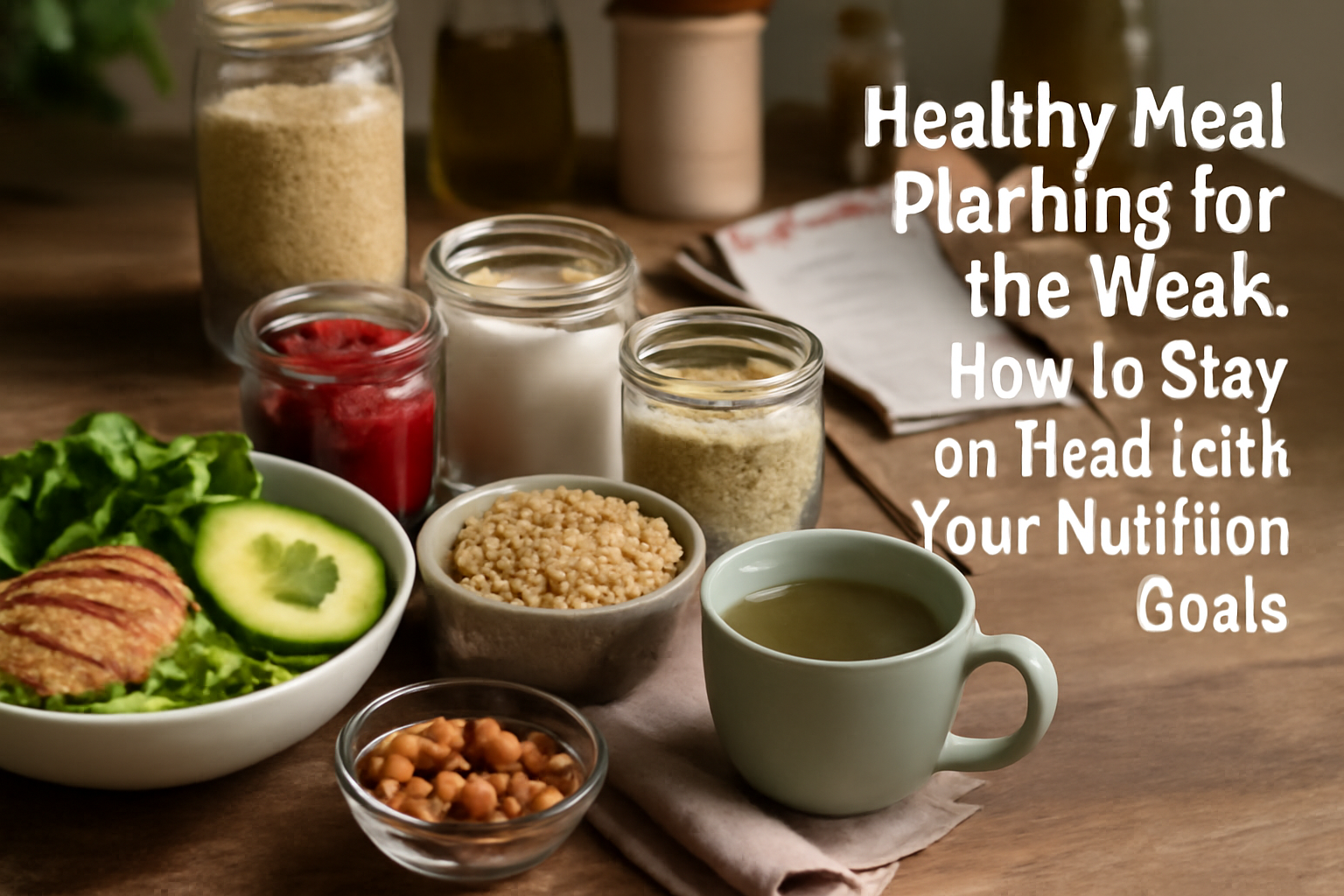Meal planning is a powerful tool that can help you stay on track with your health and fitness goals. By preparing your meals in advance, you can ensure that you’re eating nutritious, balanced meals that fuel your body and support your well-being. This article will guide you through the process of meal planning for the week, making it easier to stick to your nutrition goals.
Why Meal Planning is Important
Meal planning helps you avoid unhealthy food choices, reduce stress about what to eat, and save time during the week. When you plan your meals, you can make sure you’re getting the right balance of nutrients—protein, healthy fats, fiber, and carbohydrates—while avoiding the temptation of fast food or overly processed snacks.
Benefits of Meal Planning
- Healthier Eating: By planning your meals, you ensure that you’re eating whole, nutrient-dense foods.
- Time-Saving: Meal prepping in advance allows you to have meals ready to go, saving you time during busy days.
- Portion Control: Meal planning helps you control portions and avoid overeating.
- Budget-Friendly: Planning ahead can help reduce food waste and save money by purchasing only what you need.
- Reduces Stress: Having meals prepared reduces decision fatigue and helps you stick to your goals.
Steps to Create a Weekly Meal Plan
1. Set Your Nutrition Goals
Before you start planning, define your nutrition goals. Are you aiming for weight loss, muscle gain, or simply maintaining a balanced diet? Knowing your goals will help you determine the types of meals you need.
2. Create a Weekly Menu
Take some time to plan your meals for the week. Include a variety of meals that are balanced and easy to prepare. Be sure to incorporate:
- Fruits and Vegetables: Aim for a variety of colors and types, as they provide essential vitamins, minerals, and antioxidants.
- Lean Proteins: Include options like chicken, fish, tofu, or legumes to support muscle repair and growth.
- Whole Grains: Choose whole grains like brown rice, quinoa, and oats for long-lasting energy.
- Healthy Fats: Avocado, nuts, seeds, and olive oil can help maintain hormonal balance and provide satiety.
3. Plan Your Meals and Snacks
Make a list of breakfast, lunch, dinner, and snacks for each day. Consider batch cooking or making larger portions of meals that can be used for multiple days.
4. Make a Shopping List
Based on your menu, create a shopping list of all the ingredients you’ll need. Stick to your list to avoid impulse purchases, and try to buy in bulk when possible to save money.
5. Prep Your Meals in Advance
Once you have all the ingredients, take a few hours to prep your meals. This could involve:
- Cooking grains or proteins in large batches.
- Chopping vegetables or preparing salads.
- Pre-portioning snacks like fruits, nuts, and yogurt into containers.
- Preparing smoothie bags with all the ingredients so they’re ready to blend.
6. Store and Organize
Store your prepped meals in containers that are easy to grab. Make sure they’re properly labeled with dates to ensure freshness. Consider investing in airtight containers to keep your meals fresh throughout the week.
Tips for Successful Meal Planning
- Keep it Simple: Focus on meals that are easy to prepare and don’t require complicated ingredients.
- Batch Cook: Prepare larger portions of your meals so you can enjoy leftovers for lunch or dinner on the following days.
- Use the Freezer: Freeze meals that won’t be eaten immediately to extend their shelf life.
- Mix and Match: Use the same ingredients for different meals to save time and reduce waste.
Sample Weekly Meal Plan
Monday:
- Breakfast: Overnight oats with chia seeds, almond milk, and berries.
- Lunch: Grilled chicken salad with avocado, spinach, and olive oil dressing.
- Dinner: Quinoa with roasted vegetables and a side of grilled salmon.
- Snacks: Apple with almond butter, Greek yogurt with honey.
Tuesday:
- Breakfast: Smoothie with spinach, banana, almond milk, and protein powder.
- Lunch: Quinoa bowl with roasted chickpeas, cucumber, and hummus.
- Dinner: Stir-fry with brown rice, tofu, broccoli, and soy sauce.
- Snacks: Carrot sticks with guacamole, nuts.
Stay Consistent and Enjoy the Benefits of Meal Planning
By planning your meals in advance, you can ensure that you’re eating healthy, balanced meals that support your fitness goals. Meal planning not only saves you time and stress but also helps you stay on track with your nutrition and overall well-being. With these simple tips and strategies, you’ll be able to make nutritious eating a sustainable habit.

